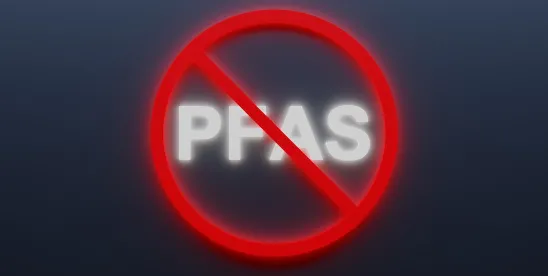According to an April 16, 2024, request for information (RFI), as part of its ongoing commitment to advancing sustainable acquisition, the General Services Administration (GSA) is exploring opportunities to reduce or eliminate potential per- and polyfluoroalkyl substances (PFAS) “with the intent to reduce exposure from products offered to the Government through GSA’s contract solutions.” 89 Fed. Reg. 26887. GSA states that it is publishing the RFI to obtain comments “to help us understand potential areas for focus, and to identify potential unintended negative impacts.” According to the RFI, at this time, GSA has not determined whether it should work toward a notice of proposed rulemaking to address this topic. Comments are due June 17, 2024.
GSA seeks responses to the following questions:
- Aside from a product’s ecolabel, are there other ways to identify if a product contains PFAS?
- Considering GSA’s goal to reduce products containing PFAS, what product categories have the greatest opportunity for GSA to reduce or eliminate PFAS exposure?
- What should GSA consider in terms of defining if a product has reduced or eliminated PFAS?
- What product areas should GSA exclude at this time, and why?
- Are there unintended impacts GSA should anticipate?
a. If so, what mitigation strategies should GSA consider? - What is the potential impact on domestic manufacturing if GSA establishes PFAS reduction requirements that reduce or prohibit PFAS, or eliminate them entirely?
- What limitations exist for you to identify PFAS in the products that you offer?
- Would your answers to questions 6 and 7 be different if only intentionally added PFAS (or when a PFAS-containing chemical is included in a product that serves an intended function in the product) was the focus of this inquiry?
- What is the potential impact on small businesses, including socioeconomic small businesses, if GSA establishes PFAS reduction requirements or prohibited PFAS entirely?
- How long should GSA give contractors to reduce PFAS?
- What type of exception process should GSA consider?
- What information is readily available for you to determine if your products contain PFAS chemicals?
a. If there is not information readily available, what type of tools would help you determine if PFAS is present (e.g., supply chain mapping, specific ecolabels)? - Would it be more impactful for GSA to target a specific product type or chemical signature in products to meet the goal of reducing or eliminating PFAS?
- Are there existing industry manufacturing standards or oversight that address PFAS reduction or elimination?
In addition to the questions above, GSA states that it also seeks to understand better “the bigger picture regarding what industry changes are in fact feasible from an economic perspective.” GSA requests economic data and consumer research to help increase its understanding of the market. GSA provides the following questions as “simply things to consider”:
- What will the estimated costs be either to reduce or to eliminate PFAS within your industry?
- Is there a large price differential between a product that contains PFAS and an alternative product?
- How would a reduction or elimination of PFAS-containing products impact your company’s ability to compete?
- To what extent is your industry already moving to understand better and reduce the presence of PFAS in products as a result of broader market forces or policies being considered or enacted by entities other than the federal government?




 />i
/>i

